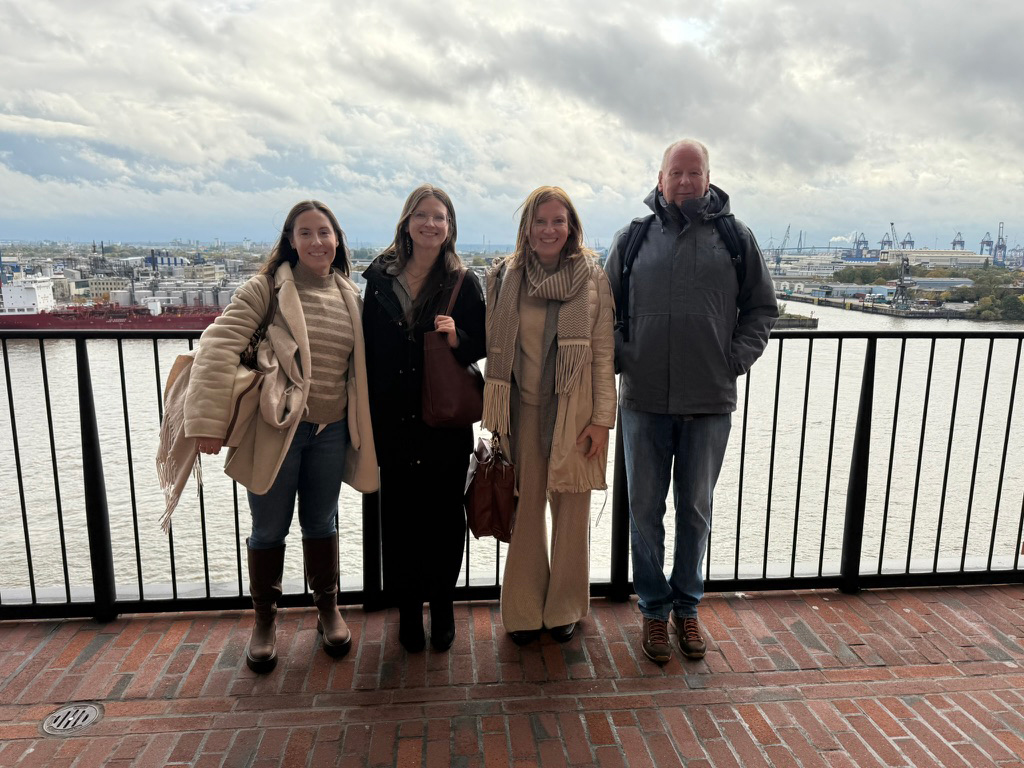
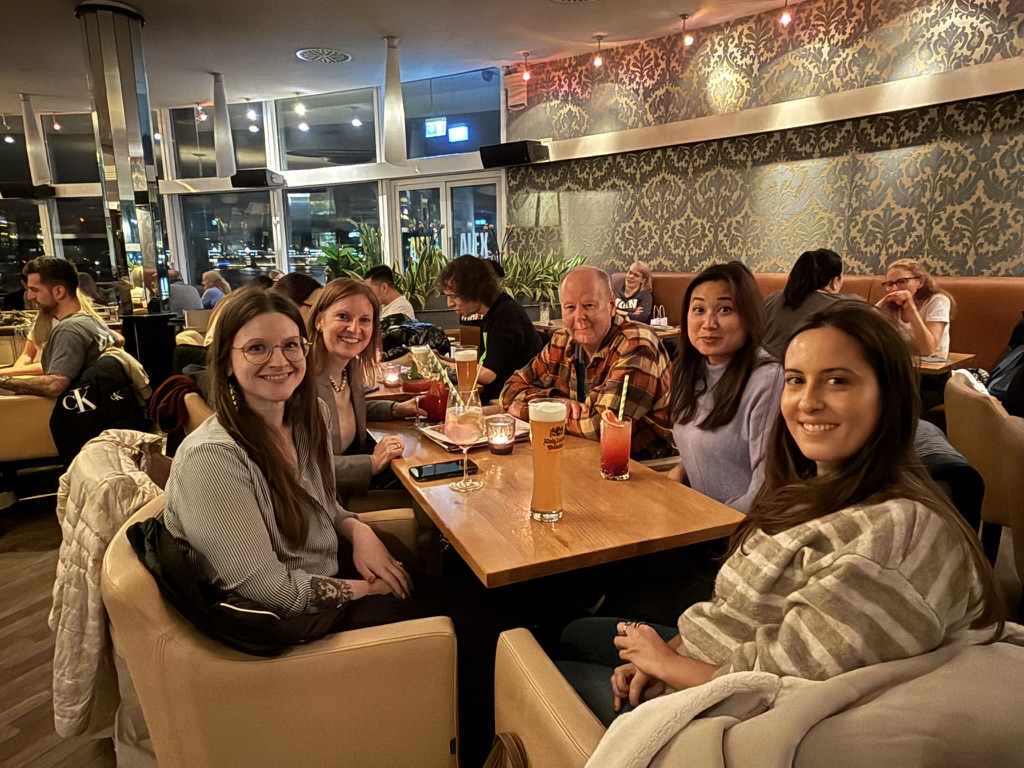
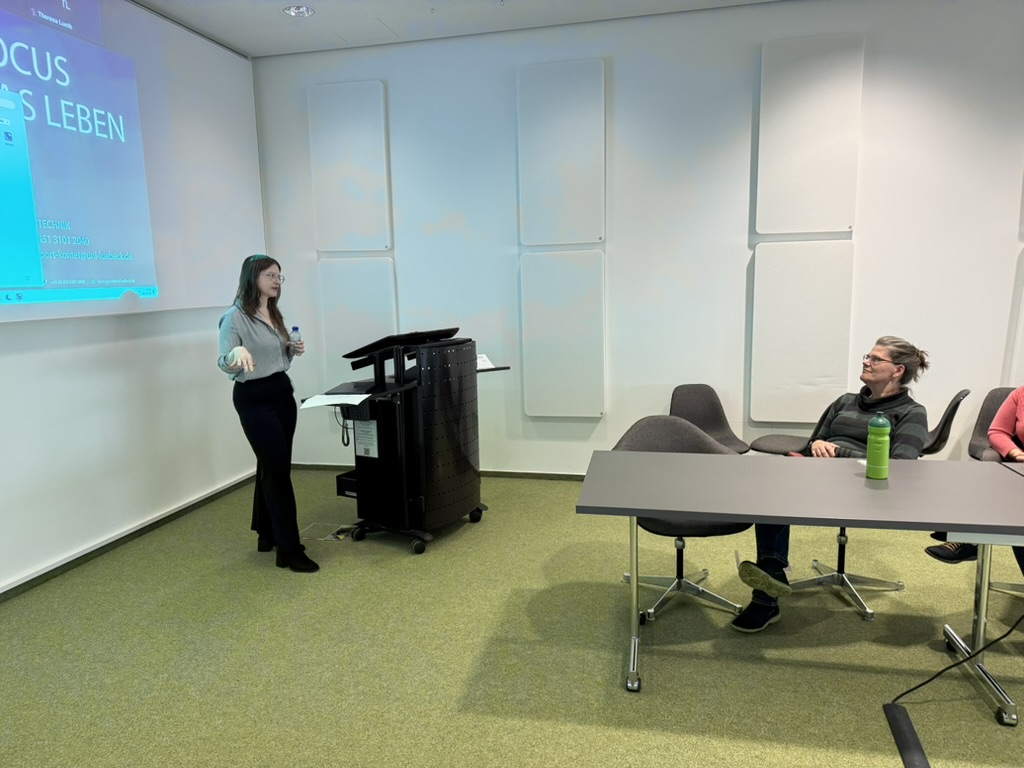
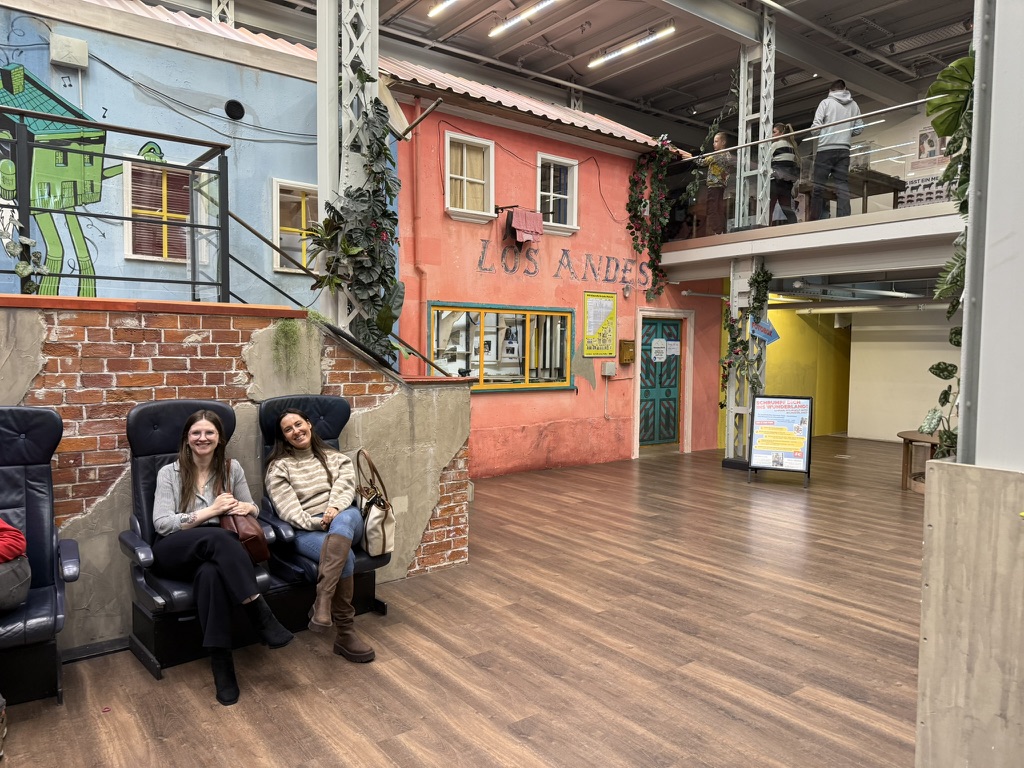
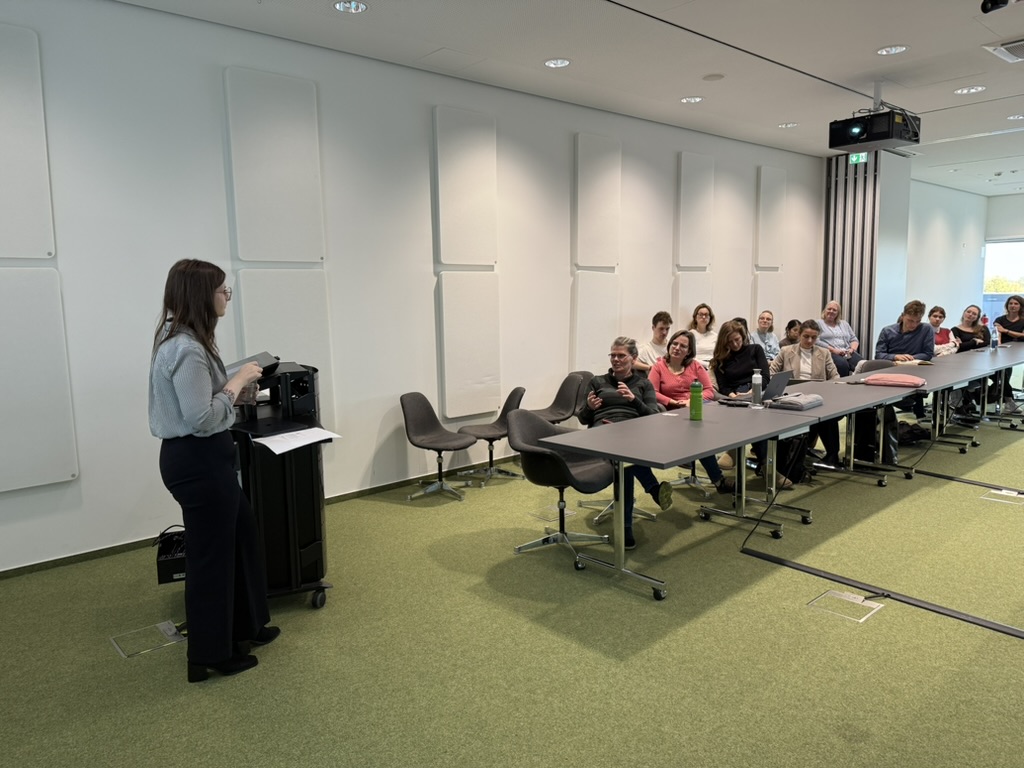
On October 21, the Institute of Neurogenetics had the pleasure of welcoming three distinguished guests: Dr. Laurel Screven, Dr. Peter Heutink, and Dr. Natalia López González del Rey. All three are active members of the Global Parkinson’s Genetics Program (GP2), a collaborative effort under the Aligning Science Across Parkinson’s (ASAP) initiative. GP2 is dedicated to deepening our understanding of the genetic architecture of Parkinson’s disease and translating that knowledge into meaningful, accessible therapies worldwide.
Dr. Laurel Screven is a scientific project manager at the Center for Alzheimer’s and Related Dementias (CARD) at the National Institute on Aging. With a background in psychology and behavioral neuroscience, her work bridges neurobiology and project coordination in complex research environments. Within GP2, she co-leads the Project Proposal, Approval, and Execution Working Group and serves on both the Complex Disease Network and the Steering Committee, helping to shape strategic direction and execution across the initiative.
Dr. Peter Heutink, based in Montieri, Italy, brings decades of expertise in genetics and neurodegeneration. Trained in human genetics, he has led major research institutions across Europe, including serving as the speaker of the German Center for Neurodegenerative Diseases (DZNE) in Tübingen and CSO at Alector Inc. in the U.S. Through GP2’s Monogenic Network, he continues his mission of identifying genetic risk factors in Parkinson’s and advancing them toward therapeutic development.
Dr. Natalia López González del Rey is a postdoctoral fellow in the Awatramani lab at Northwestern University’s Feinberg School of Medicine. Her research focuses on the selective vulnerability of the nigrostriatal pathway in Parkinson’s disease, using state-of-the-art tools such as transgenic mouse lines and single nucleus multiomics. With a PhD from HM-CINAC and the Autonomous University of Madrid, she has worked with both rodent and non-human primate models and has contributed to therapeutic research involving nanobodies targeting alpha-synuclein. Within GP2, she supports efforts to translate molecular insight into more personalized treatment strategies.
We are thankful for the opportunity to connect with these outstanding researchers and look forward to future exchanges through the GP2 network and beyond.
